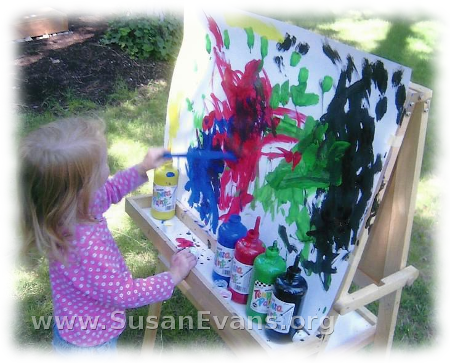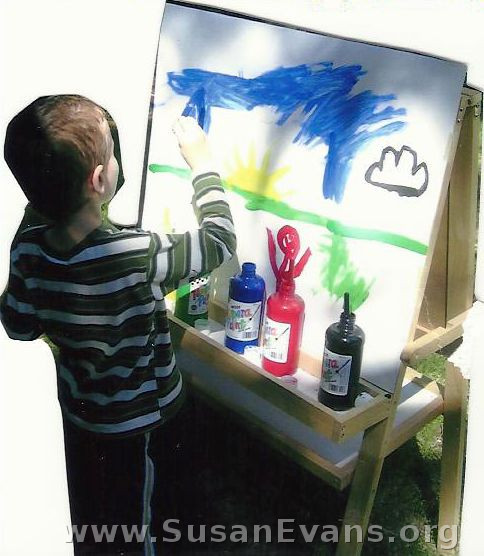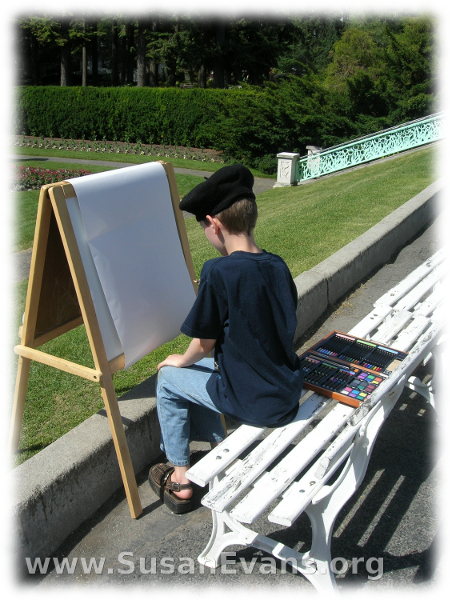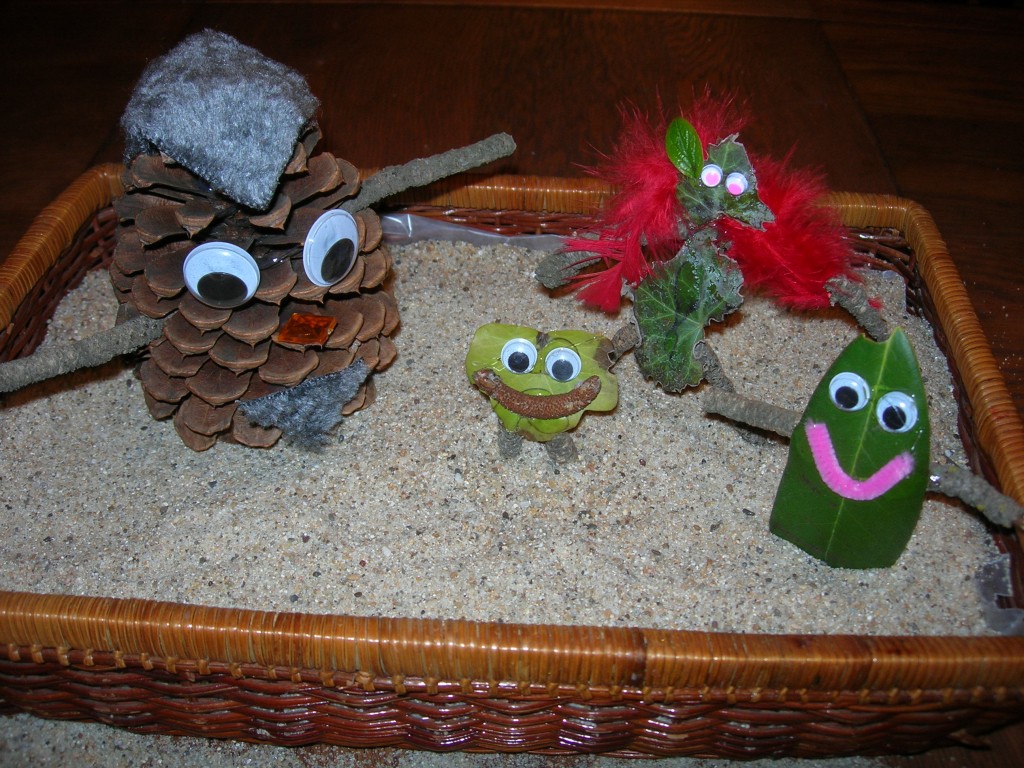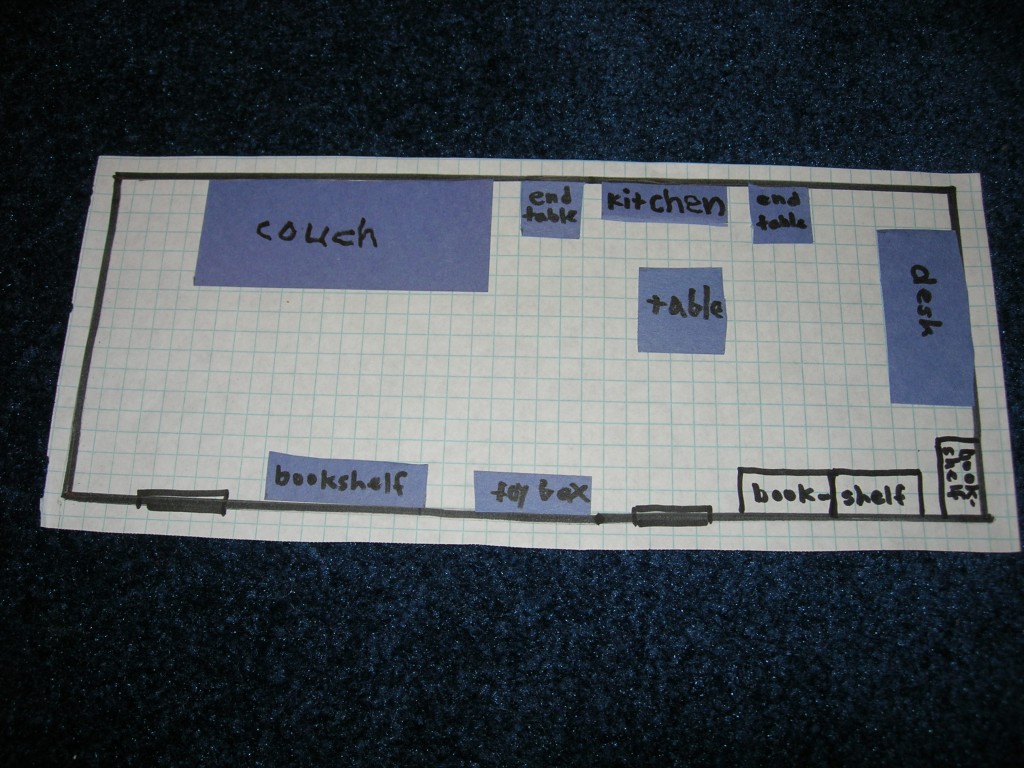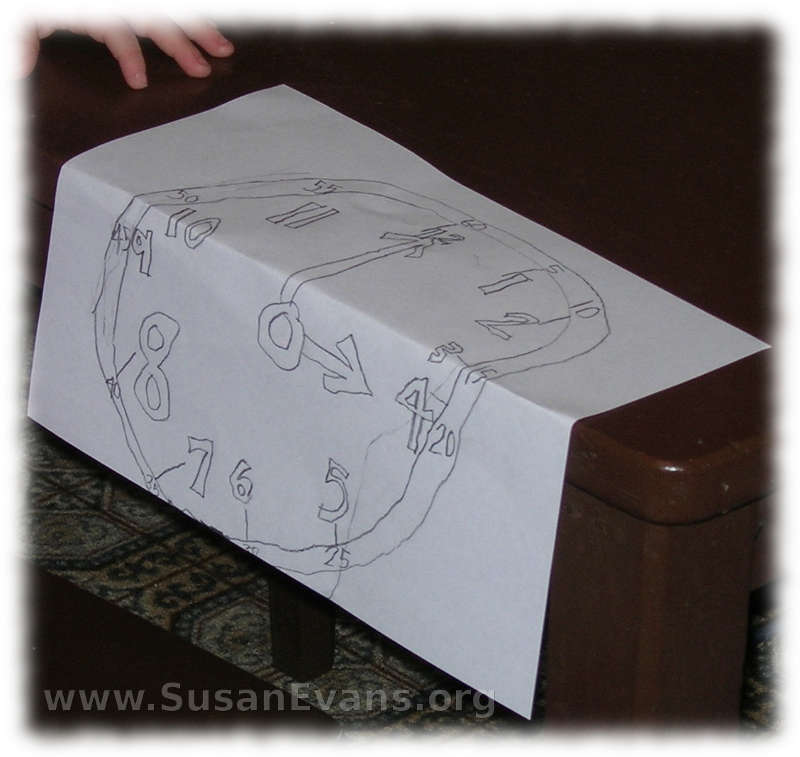My children have always enjoyed painting on an easel outside, ever since they could stand up and hold a paintbrush. As they grow older, you can experiment with different kinds of paper. You can clip watercolor paper to the easel, and allow your children to do some watercoloring of a beautiful scene outdoors. You can clip sketch paper to the easel, enabling the child to sketch the scene. You can also go all out and buy a canvas and do oil painting. This is better than watercoloring outdoors, because the watercolors drip if you use a lot of water, whereas the oil paints don’t drip and have a richer color.
You can also do sketches with colored pencils, oil-based crayons, or chalk. I recommend getting bright chalk colors so that your child can see the chalk show up on the paper. Artist chalk is brighter than sidewalk chalk and can be purchased at a local art supply store.
Try going to a local botanical gardens or to a well-known hilltop near where you live, somewhere with a good view. Then sketch out briefly with a pencil the main shapes in the picture. Now paint with the oil paints. You can even wear a French beret while painting, adding to the artistic ambience. Your kids will be growing in their art skills as well as getting fresh air!
